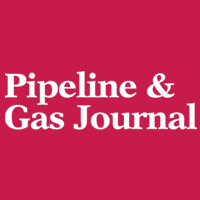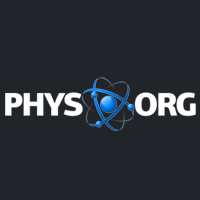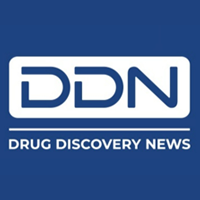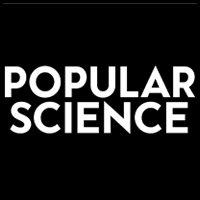Media Watch Archives
Hydrogen Blending Well into Climate Change Discussion
Pipeline & Gas Journal -
“We continue to work with SoCalGas on transforming several parts of its gas system for introducing some percentage of hydrogen initially and transforming it for eventually carrying all hydrogen,” said Jack Brouwer, UCI engineering professor and hydrogen [National] Fuel Cell Research [Center] director. UCI’s work with Sempra’s SoCalGas utility involves determining what impacts hydrogen-natural gas blends would have on various gas-fired appliances and end-uses. “We’ve found these appliances can handle blends of up to 30% hydrogen with no problem, and in most cases with reduction of nitrogen oxide (NOx) emissions,” Brouwer said. Read More
Novel Technique Differentially Maps Phonon Momenta with Atomic Resolution
AZO Materials -
“We developed a novel technique to differentially map phonon momenta with atomic resolution, which enables us to observe nonequilibrium phonons that only exist near the interface,” stated co-author Xiaoqing Pan, UCI professor of materials science and engineering and physics, Henry Samueli Endowed Chair in Engineering, and IMRI director. Pan adds, “This work marks a major advance in the field because it’s the first time we have been able to provide direct evidence that the interplay between diffusive and specular reflection largely depends on the detailed atomistic structure.” Read More
Phonon dynamics enable a deeper understanding of how heat travels through quantum dots
Phys.org -
"We developed a novel technique to differentially map phonon momenta with atomic resolution, which enables us to observe nonequilibrium phonons that only exist near the interface," said co-author Xiaoqing Pan, UCI professor of materials science and engineering and physics, Henry Samueli Endowed Chair in Engineering, and IMRI director. "This work marks a major advance in the field because it's the first time we have been able to provide direct evidence that the interplay between diffusive and specular reflection largely depends on the detailed atomistic structure." Read More
This Startup Raised Over $10 Million To Make Metal Manufacturing More Efficient And Sustainable
Forbes -
Foundation Alloy, a vertically integrated metal part production platform, announced it has raised a $10.5 million seed funding round …. The startup, which specializes in manufacturing high performing metal parts, was founded in February of this year by CEO Jake Guglin, … Jasper Lienhard, and Professors Chris Schuh (Massachusetts Institute of Technology) and Tim Rupert (University of California Irvine.) … The company says that through the technologies it has developed, it can make parts using less energy and creating less waste, making the manufacturing process more sustainable for the environment. Read More
Here are the colleges that will compete to make OC ‘world’s sustainability capital’
The Orange County Register -
“Over the next year-and-a-half we will be designing, building, and testing a 1,200-square foot Accessory Dwelling Unit (ADU) that is carbon-neutral, resilient, affordable, water- and energy-efficient, and of course attractive and comfortable,” says the website for Team M.A.D.E.-OC — “Modular Affordable Dwellings for the Environment” — which pairs up Orange Coast College and UCI’s School of Engineering. … UCI/OCC project lead [and UCI director of special projects] Jennifer Wilkens said Team M.A.D.E.-OC is in the early stages of recruiting students and faculty mentors, and beginning schematic design. [Subscription required, campus-wide access provided by UCI Libraries. Sign-up here: https://guides.lib.uci.edu/news/ocregister] Read More
New assessment tool shows Bay Area counties with highest wildfire risk
KABC San Francisco -
While doing things to protect your home will help, the study concluded that a community-wide effort is needed to create a real firewall. One option is to greatly increase the number of controlled burns, according to a study released out of UC Irvine. "Our study shows that winter and spring are feasible times of the year that more prescribed burns should be done to help mitigate these extreme wildfires that we could see in the future," said Janine Ann Baijnath-Rodino [postdoctoral scholar] with UC Irvine's Environmental Engineering Department. Read More
Research recommends extending California's prescribed burning season
Phys.org -
"California's wildfires have been getting worse every year in recent decades, owing to factors such as climate change and a century-long fire deficit coupled with a buildup of vegetation and fuels," said study leader Tirtha Banerjee, UCI assistant professor of civil and environmental engineering. "Prescribed burns can help alleviate this problem, but only if they're done with adequate frequency and over a large enough territory in the places where they are needed." Read More
Shrinking toys inspire diagnostics and wearable sensors of the future
Drug Discovery News -
At the height of their popularity in the 1980s, no one could have guessed that Shrinky Dinks would inspire tiny diagnostic tests or sensors to detect changes in a person’s health. While these inexpensive and easy-to-access toys may have started as a childhood pastime for Michelle Khine, a bioengineer at the University of California (UC), Irvine, they became her inspiration for a new way to diagnose and monitor disease. Read More
Coastal fire a harsh reminder that fire season is longer, more intense
The Orange County Register -
A year ago, researchers at UC Irvine issued a report on Southern California wildfire trends that concluded what any non-scientist, long-time resident already knew – there have been a lot more wildfires in the region during this century. … “Each new year of the 21st century has been a record-breaker in terms of wildfire damage in California,” said report co-author Tirtha Banerjee, an [assistant] professor of civil & environmental engineering at UCI. [Subscription required, campus-wide access provided by UCI Libraries. Sign-up here: https://guides.lib.uci.edu/news/ocregister] Read More
Lake Powell’s drought is part of a growing threat to hydropower everywhere
Popular Science -
When hydroelectric power isn’t reliable, people typically turn to fossil fuels, says Brian Tarroja, an energy researcher at the University of California, Irvine. “You do want to build new assets, more renewable energy, more storage, more flexibility and all that stuff,” he says. … That could mean plants that work with lower amounts of water. Even more crucial, he says, is making sure that other renewable energy sources are built up as well. Otherwise, shortcomings in hydropower will continue to mean sliding back into fossil fuel use. Read More








